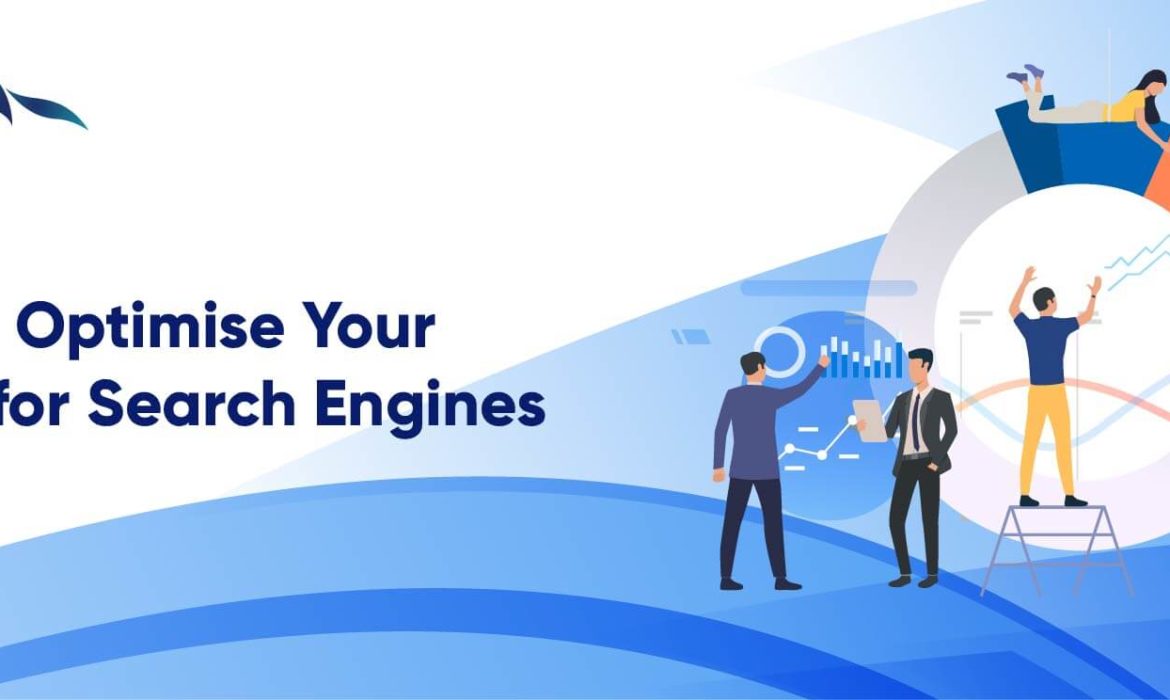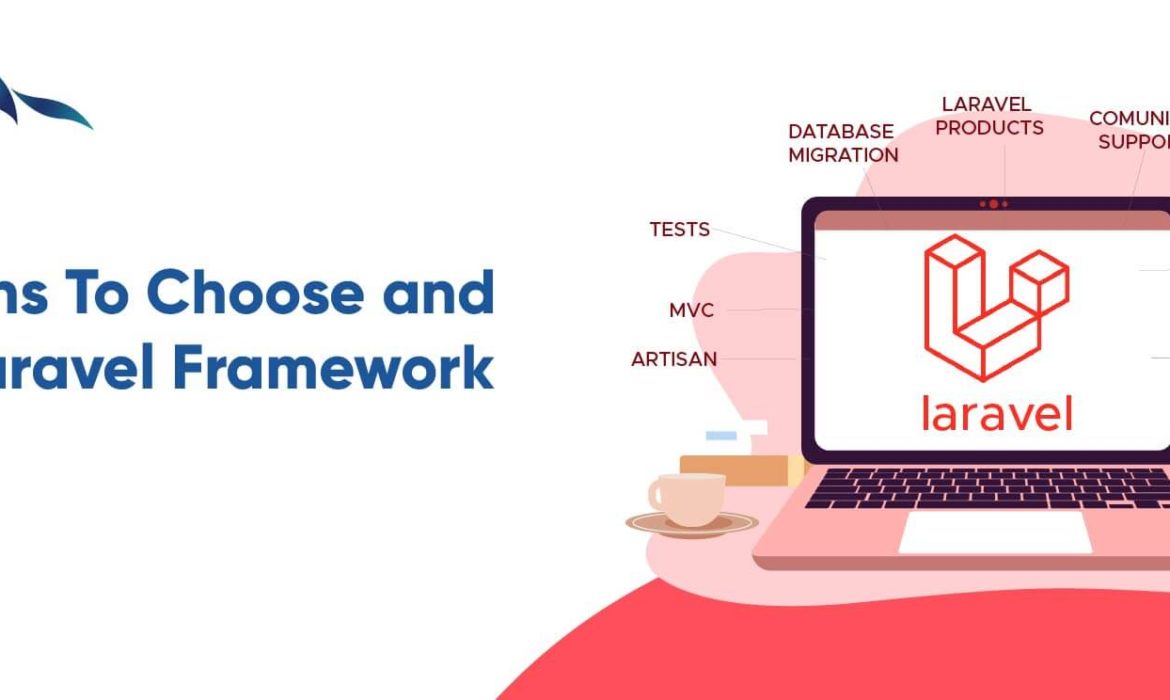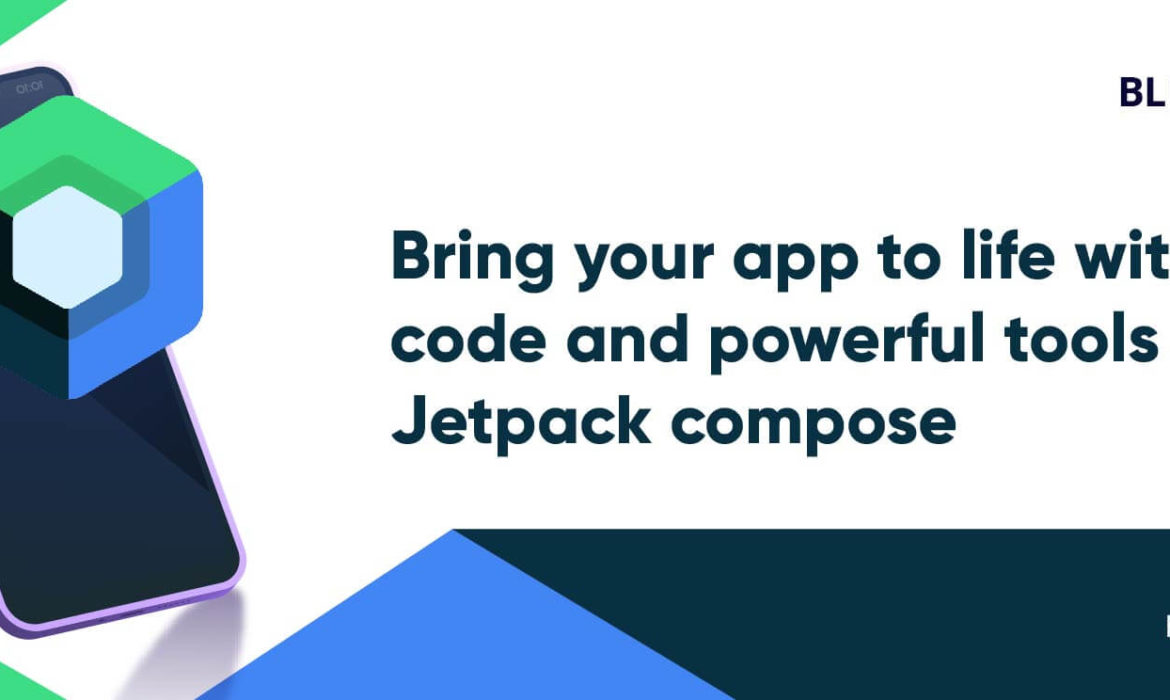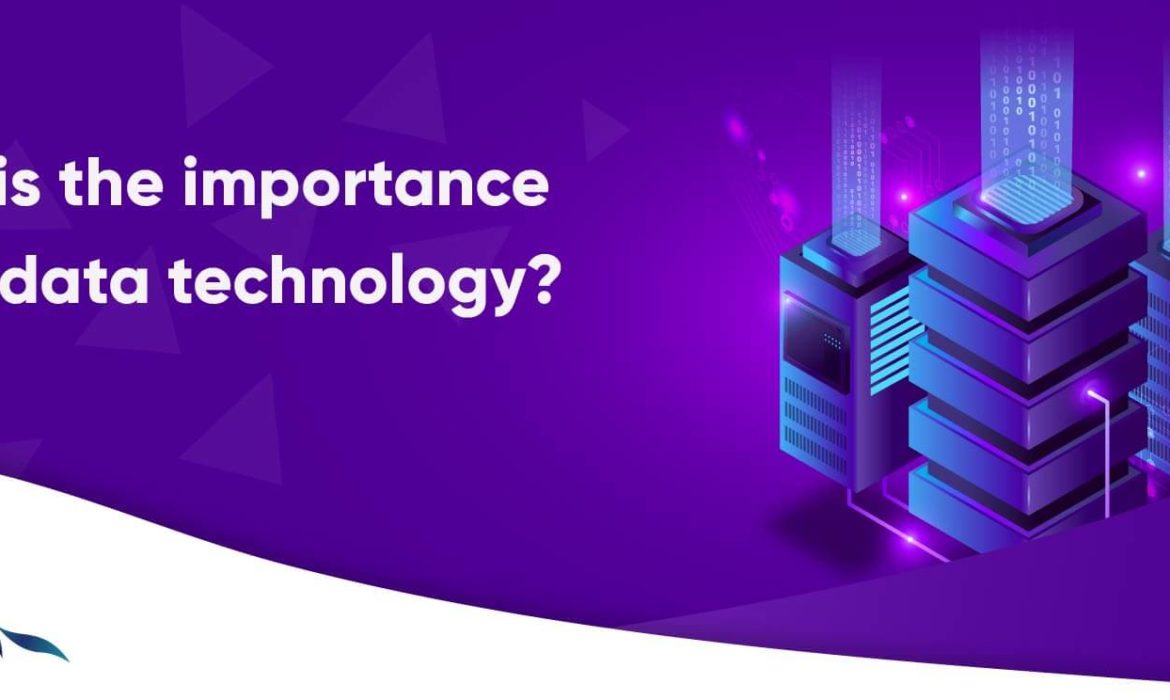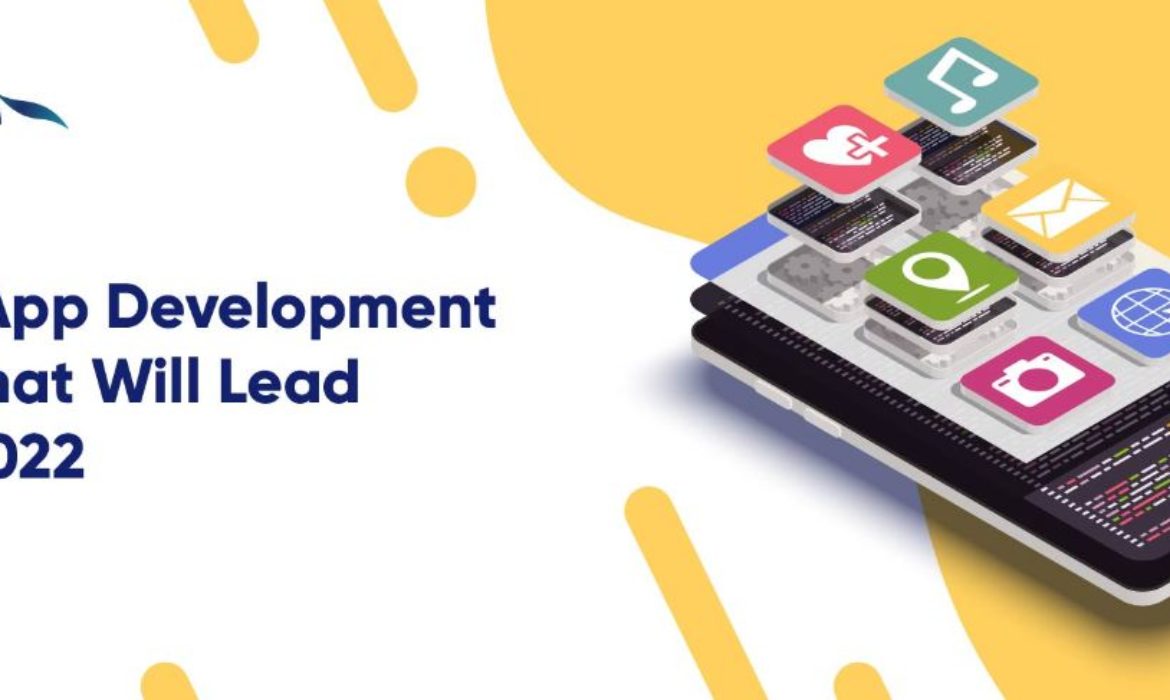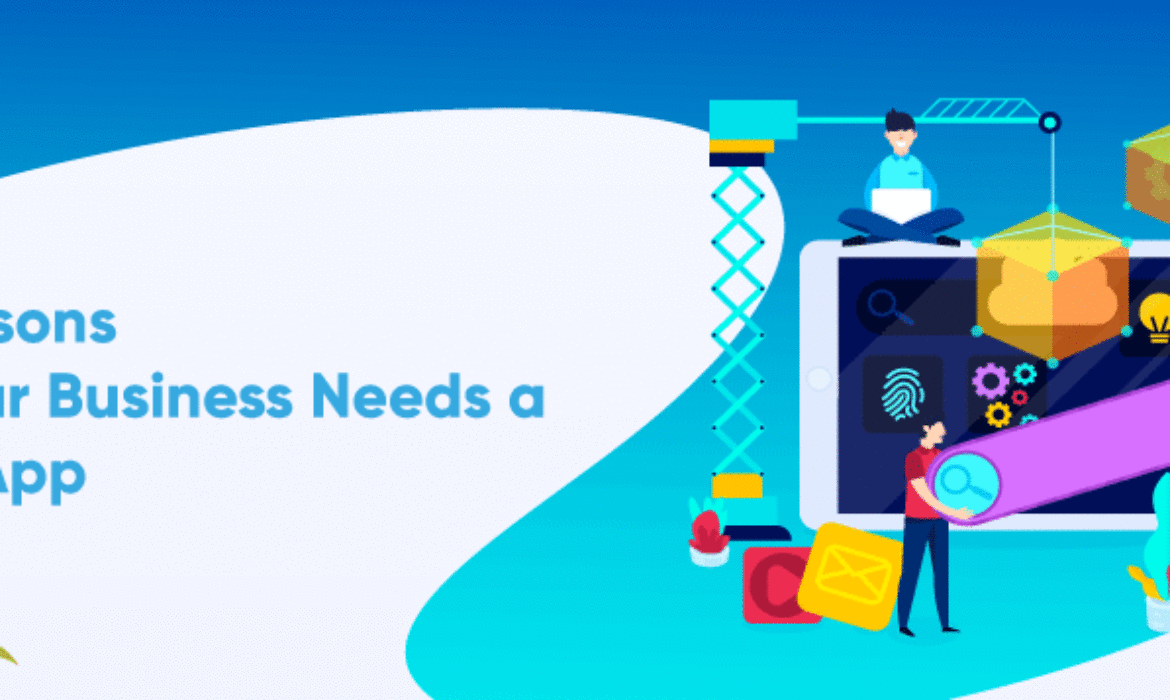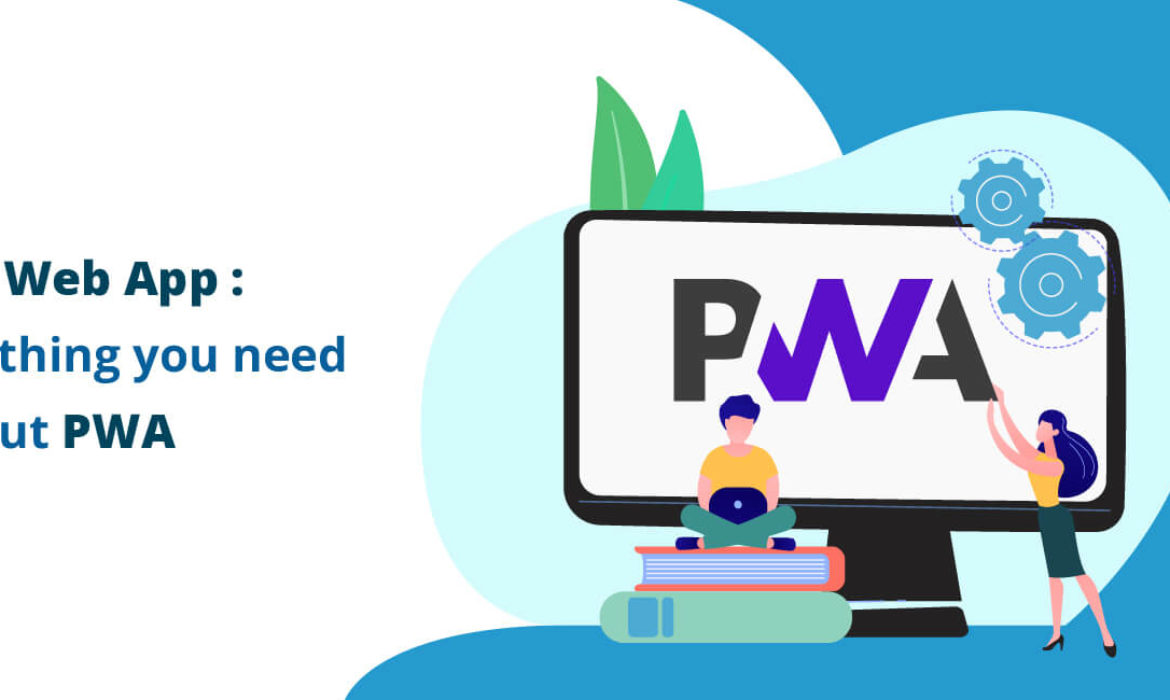How to Optimise Your Brand for Search Engines
Both online and offline brandings are equally important. This is especially true for crowded spaces where effective market penetration largely depends on standing out from the competition. Here are some ways to optimize and improve brand search volume
Use your brand name in meta titles
The main benefit of including your brand name in meta titles is that it strengthens your website’s relevance to the brand. A website that has its brand name included in its meta titles is unlikely to be mistaken for another entity, thereby ensuring that every branded search term leads users to the right domain.
Also, an often overlooked brand marketing avenue is the SERPs (search engine results pages). Practically everyone reads the title of a search result before deciding whether or not to click on it. So including your brand name in the meta title of your web pages whenever possible can help increase brand awareness.
Identify branded keywords
Branded-term keyword research will also identify questions that consumers have about your products. Consumers that have questions about your brand are usually either already customers or interested in buying a product. In either situation, they should get the answers they want from you instead of a competitor, or elsewhere. I’d recommend answering each question with Branded queries that are extremely valuable because, as previously noted, commercial intent is high. Some companies even bid on their competition’s branded search terms via PPC (pay-per-click). I’d recommend conducting keyword research to identify all relevant brand search terms.
You can use a tool like Google Keyword Planner. Use your brand name as the starting point or seed keyword. This will return all keywords related to your brand. Export your findings into an Excel spreadsheet and filter out any keywords without the brand name.
Once you’ve uncovered the branded keywords consumers are using to find your products/services, use the information to create content that addresses them, dedicated content pages on your website, though you can combine related questions.
Own the local map packs
Optimize your business locally so that it appears at the top of map packs when people search for location-specific branded terms. The map pack is a box that displays on the SERPs and contains the names, addresses, and phone numbers of nearby businesses. Adding your business and website address on Bing Places or Google My Business (GMB) further strengthens your brand’s online presence.
You can optimize your map pack in the following way. First, make sure your brand name, address, and phone number are accurate in every web directory. Then use structured data markup to specify your brand name, address, and phone number on the company website. “Structured data” is an HTML markup that is used to provide more information to search engines. I recommend speaking to your web developer or SEO expert for implementation.
Create useful tools unique to your brand
Consumers enjoy applications that make life better, such as online calculators, calendars, etc. Creating useful online tools can increase branded term searches, which naturally improves how your website performs on the SERPs. People will often search for tools using your brand name instead of painstakingly typing in the web address. Furthermore, these tools can become additional consumer touchpoints that generate leads and traffic.
Contribute or publish content on high-traffic sites
Contributing or publishing content to high-traffic websites can build brand awareness and increase your company’s reach and website traffic. The key is contributing content that demonstrates your organization’s expertise. A great and inspiring article can drive readers to search for your brand name on search engines because they want to know more.
Utilize offline promotions
Offline promotions, like regularly hosting events or sponsoring groups, can increase the number of people that search for your brand online. Even something as simple as handing out more business cards can improve branded term searches. If implemented strategically, every offline marketing activity can spark curiosity, which can lead consumers to investigate your brand further online.
Conclusion
SEO can prove extremely complex, but knowing the basics will give you a running start.
Begin by collecting as much data as you can and conducting thorough research. Write content geared toward your audience, but make sure it’s better than your competitors.
8 Reasons To Choose and Apply Laravel Framework In 2022
Laravel is an open-source PHP framework. Over the last few years, Laravel has gained constant popularity for building unique web applications within this rapidly evolving technological sector. Laravel provides elegant features that cover all aspects of everyday use cases, and you can enjoy the creative experience to be truly fulfilling. This blog post will show you more about the Laravel framework and its features.
What is the Laravel Framework?
Laravel is an MVC framework with bundles, migrations, and Artisan CLI. And Advanced PHP, Laravel will make our task easier. It will save a lot of time if we are planning to develop a website from scratch. Not only that, but the website built in Laravel is also secure. It also prevents various attacks that can take place on websites.
We’ll now see why Laravel development services and the Laravel framework are the finest choices for web development.
Why Use Laravel PHP Framework for Web Development
Your web application can become more scalable, due to the Laravel framework. Because it reuses components from other frameworks when building web apps, considerable time is saved in designing web applications. It contains interfaces and namespaces, which consequently aid in managing and organizing resources. Now, let’s look at some of the most important reasons to choose the PHP Laravel Framework in 2022:
The Model-View-Controller architectural support
One of the most fundamental advantages that justify the much higher popularity of Laravel compared to other PHP frameworks is that it follows best development practices. The application of the Model-View-Controller-based software design pattern is a good case in point.
The model-view-controller (MVC) architectural pattern, in the first place, ensures clarity between logic (Model) and presentation (View) through the lens of the Controller, which results in overall performance improvement, and better documentation readability, and more.
Object-oriented libraries
Laravel features an excellent collection of Object-Oriented Libraries along with several pre-installed libraries like Authentication Library. These kinds of Object-Oriented Libraries are not present in Symphony, CodeIgniter, or any other popular PHP frameworks.
The Authentication Library of Laravel is packed with a wide variety of advanced features. Some of the most noticeable ones are password resets, Bcrypt hashing, Cross-site Request Forgery encryption and protection, and checking active users.
Artisan
Artisan is Laravel’s command-line tool that comes with dozens of pre-built commands that you can run to the command-line interface to perform tasks and avoid repetitive tasks during development making use of this tool.
Effective ORM and database management
The Laravel framework uses an ORM (Object Relational Mapping) called Eloquent, which is, in fact, a huge advantage to keep in mind when deciding what PHP framework to opt for. It is a built-in implementation that is also the best ORM among all other PHP frameworks.
Blade Template Engine
The blade is one of the vital templating engines of Laravel. It is a handful of functions to format your data within views. Blade lets you implement the template that you use to build complex layouts. Blade templates make use of the.blade.php extension.
Security is Laravel’s primary concern
Laravel is one of those frameworks that integrates SQL injection to strongarm the website, protecting all data.
User authentication, password management, user log-in and sign-up, data encryption, and route protection are all the focus of Laravel’s security measures.
Adequate support for efficient unit tests
Laravel comes with a specific set of features that allow you to run unit tests through PHPUnit, a well-established unit testing package for PHP. Once the phpunit.xml file is automatically configured to run unit tests, Laravel runs the tests in Feature and Unit directories.
Routing
Routing in Laravel allows users to route all their application demands to its appropriate controller. The most primary routes in Laravel acknowledge and accept a Uniform Asset Identifier together with a closure, given that it should be got to be a simple and expressive way of routing.
Conclusion
The above-mentioned features of the Laravel PHP framework give us a clear idea of why it has gained widespread popularity among developers. So, if you have not used the Laravel PHP framework, then give it a try, as it will surely save you a valuable amount of time and effort.
Bring your app to life using jetpack compose
Jetpack Compose is a modern UI toolkit designed to simplify Android UI development. It consists of a reactive programming model with the conciseness and ease of Kotlin programming language. UI is fully declarative, so you can describe your UI by calling some series of functions that will transform your data into a UI hierarchy. When the data changes, the framework automatically calls these functions and updates the view.
What is Android Jetpack?
Jetpack is a set of libraries that help developers follow best practices, reduce boilerplate code, and write code that works consistently across Android versions and devices so that developers can focus on the code itself.
What is Jetpack Compose?
Jetpack Compose is Android’s modern toolkit for developing native UIs. It simplifies and accelerates UI development on Android. It helps you quickly create an app with less code, powerful tools, and intuitive Kotlin APIs.
Advantages of Jetpack Compose
- Writing less code affects all stages of development.
- Compose uses a declarative API, which means that all you need to do is describe your UI.
- Compose is compatible with all your existing code.
- It is easy to update and easy to test.
- It is easily compatible with the existing views present in Android.
- It increases the development speed.
- It removes the boilerplate of findViewById or ViewBinding references.
Disadvantages of Jetpack Compose
- The downside of this solution is re-rendering the preview each time code will change and builds are not that fast.
- It’s a little slower than XML to render a change. (Try to build a release build with turn off debug logs and should be working fine )
- Some components are not supported, and some features are coming.
Some Basic Functions of Jetpack Compose
Composable Function: Composable Function is represented in code by using @Composable annotation to the function name. This function will let you define your app’s UI programmatically by describing its shape and data dependencies rather than focusing on the UI construction process.
Preview Function: The name of the function itself tells us that the function is used to generate the preview of the composable function. It is used to display a preview of our composable functions within our IDE rather than installing our APK in an emulator or a virtual device. The preview function is annotated by @Preview.
Column Function: The column function is used to stack UI elements in a vertical manner. This function will stack all the children directly one after another in a vertical manner with no spacing between them. It is annotated with Column().
Row Function: The row function is used to stack UI elements in a horizontal manner. This function will stack all the children one after the other in a horizontal manner with no spacing between them. It is annotated with Row().
Box: A widget that is used to position elements one over another. It will position its children relative to its edges. The stack is used to draw the children which will overlap in the order that they are specified. It is annotated with Box().
Spacer: It is used to give spacing between two views. We can specify the height and width of the box. It is an empty box that is used to give spacing between the views. It is annotated with Spacer().
Vertical Scroll: If the UI components inside the app do not fit the height of the screen then we have to use the scrolling type of view. With the help of a vertical scroller, we can provide a vertically scrolling behavior to our view. The contents inside the vertical scroller will be clipped to the bounds of the vertical scroller. It is annotated with VerticalScroll().
Padding: The padding function is used to provide extra white space according to the requirement around the specific view. It is simply annotated with Padding().
Lazy List: This composable is equivalent to a recycler view in android’s view system. It is annotated with LazyColumn()…
Final Thoughts
Jetpack Compose is a promising and powerful UI toolkit that you should keep an eye on. It can speed up the development process and reduce the size of the app if it is used correctly. Moreover, Compose allows you to write less code, which may result in fewer bugs.
What is the importance of big data technology?
Social applications are widely used in today’s world. This leads to rapid data growth.
Each day, billions of users connect on social media platforms, share information, and upload images, videos, and more. As a result, Big Data has become a necessity. Companies are using it to grow and beat competitors.
What is Big Data?
Data that is so large, so fast, or complex that it is difficult to process using traditional methods. Generally, big data is in terabytes to petabytes. There is no exact line between normal data and big data. Big Data helps companies generate valuable insights.
Why is Big Data Analytics important?
Big data analytics assists businesses in utilizing their data and identifying new opportunities. As a result, smarter business decisions, more effective operations, higher profits, and happier consumers. Below are some advantages of it:
Cost reduction
When it comes to storing large amounts of data, Big Data tools such as Hadoop and cloud-based analytics can reduce significant amounts of cost. In addition to that, they can identify more efficient ways of doing business.
Faster, better decision-making
Businesses can evaluate information instantaneously—and make decisions based on what they’ve learned—thanks to the speed of Hadoop and in-memory analytics, as well as the ability to study new sources of data.
New products and services
With such amazing insights through analytics, companies can understand customers’ needs. Therefore, with big data analytics, businesses can create new products to meet customers’ needs.
Businesses can use external intelligence to make decisions
They can step ahead in strategies with access to data from search engines and social media.
Improved customer service
Traditional consumer feedback systems are being replaced by Big Data tools. Consumer responses are analyzed and evaluated using Big Data Analytics Services and natural language processing technology in these new platforms.
Social Media Listening Companies can perform sentiment analysis using Big Data tools
These enable them to get feedback about their company, that is, who is saying what about the company. Companies can use big data tools to improve their online presence.
Final Words
As a result, Big Data helps companies make informed decisions and understand their customers’ needs.
Analyzing real-time data enables companies to achieve rapid growth. This allows them to defeat their competitors and succeed.
Big Data technologies help us to understand inefficiencies and opportunities in our company. They play a key role in shaping our organization’s growth.
Trends that Will Shape iOS Apps Development in 2022
There has been a lot of buzz in the general mobile market about the metaverse and the rise of blockchain integration for mobile apps. On both iOS and Android platforms, there are exciting developments in augmented reality, chatbots, and voice recognition. In parallel, Google’s Flutter, an open-source software development kit for UI development, and Facebook’s React Native tool have been noteworthy.
Let’s take a closer look at 5 trends that will shape iOS Apps Development in 2022
Benefits of Building an iOS App:
There are various other benefits of iPhone application development. Let’s have a look at its benefit
High Security:
Data duplication, data encryption, and data theft are all prevented by iOS by maintaining customer privacy and user identity. The main goal is to protect them adequately from external threats such as hacking, phishing, and so on. In addition, the iOS application provides a high-level data encryption security layer to prevent data breaches and duplications for enterprises.
Upgraded User Experience:
Users of iOS empower business applications to be the top choice. Ideal hardware, excellent customer service, and faultless software. Some work while some of the users download an Android app. But for Apple users, this is not the case. Each iOS application works smoothly on an iPhone, offering a good user experience that is always crucial for an organization. Users are assured that every app from the app store they download would work smoothly. When counting the benefits of iOS app development benefits, the satisfaction of iOS users cannot be ignored.
Quality with Quantity:
Developing an iOS system will increase the sales and value of your business. It promotes your brand, resulting in reaching your target audience.
iOS never compromises on quality. It offers quality products and innovative services. That is why audiences are attracted to iOS.
Payments are Safe:
There have been many incidents of online transaction fraud, so people are looking for a reputable and trustworthy medium for online payment transactions. Sometimes we hear about online transactions being hacked, we identify theft, and much more.
iOS has high security. With Apple Pay, the online payment transaction becomes more secure than others.
The iPhone gives you the facility of encryption for a safe transaction. So the business owners are targeting the iOS technology development to achieve success in their business with the target of 100% profit.
Fast and Easy Data Moving:
This is another important benefit customers look for. iPhone App Development has a facility for transferring data on Apple devices like iPhone, iPad, and MacBook. It takes a fraction of seconds to transfer the data from one Apple device to another. This is why it is important to develop iOS applications for your business.
Attractive Designs:
Comparison is mandatory from the viewpoint of designs. Compared to Android applications, iOS icons are more attractive. Users are attracted to the iPhone because of its stunning UI/UX. By developing iOS apps, you can attract more people to your business. iOS has a user-friendly and enjoyable interface. And this feature can make a company’s app more desirable and will boost its sales. iOS leads to better ROI.
Top Trends of iOS Application Development In 2022
- Internet of Things
- Artificial Intelligence
- Wearable Apps
- Augmented Reality (AR) Integration
- Cloud Integrated iOS Apps
Internet of Things
The Internet of Things has become a vital part of our day-to-day lives. IoT integrated iOS app developers are more focused on creating apps that can potentially connect with internet-enabled devices. In addition to improving user convenience, IoT also allows mobile app developers to embed better functionality by establishing IoT connectivity.
Machine Learning and AI
Apps developed with Machine Learning (ML) and Artificial Intelligence (AI) are more engaging, resilient, and economical apps. Core ML can do various jobs using a wide range of techniques, allowing different firms to pick what best meets their needs. The technology may be implemented into the app to start machine learning and generate additional forecasts to better the user experience.
Wearable Apps
Wearables are the future. The wearable iOS app has opened new opportunities to grow the mobile industry. Devices like Apple Watch, Smartwatch, healthcare devices are leading the market at present, and it is going to be the biggest hit in the future.
Wearable apps are enriched with complex features like display control, notification, call management, and many more.
Augmented Reality (AR)
A major innovation in iOS app development is the use of augmented reality and virtual reality. Apple launched an AR editor; Reality Composer, to develop apps even without a 3D design experience. And with RealityKit, one can also integrate virtual objects into the real world.
Cloud Integrated iOS Apps
iCloud was originally released in 2011. Since then, this technology has become an essential component of all Apple devices. iCloud is a service that sends data from your device to the cloud. For example, if you begin working on a document on an iPhone, you may continue to manage it on an iPad using the same AppleID. Many programs now use iCloud to boost their performance. This enables the program to be more lightweight while ensuring the security of users’ vital information.
Conclusion
What’s trending today might get outdated tomorrow, so it’s important to remain updated and catch up on the latest trends and implement them in your iOS app development strategy. The trends keep changing and this leads to an increased demand for iOS app development services. 2022 will certainly see iPhone app developers taking the iOS app development to the next level with these trends.
For a premium iOS solution, you can contact Bluefox Technologies.
How to Mitigate the Top 11 API Security Risks
Application Programming Interface, or API, is a software intermediary that lets two applications interact. When you use Facebook, send an instant message, or check the weather on your phone, you are using an API. APIs allow businesses to automate tasks and improve communication between departments.
11 Most Common API Security Risks
Broken Object Level Authorization: The attacker can access objects they shouldn’t be able to access. This could include sensitive data or privileged information.
Mass Assignment: A Mass Assignment occurs when client-provided data (e.g., JSON) is bound to data models without sufficient properties filtering based on an allow-list. Attackers can edit object properties they aren’t allowed to by guessing, researching other API endpoints, reading the documentation, or giving new object properties in request payloads.
Security Misconfiguration: Attackers gain access to sensitive data or systems when a developer’s security controls are ineffective or not turned on.
Broken User Authentication: In this case, authentication mechanisms are often implemented incorrectly, allowing attackers to access resources without proper authorization and compromising the integrity and safety of the system. Falsifying usage credentials can lead to other user information being permanently taken, and the disruption of API security is due to the compromise of identification mechanisms.
Broken Function Level Authorization: The complexity of authorization procedures with multiple hierarchies, groupings, and roles, and the blurred boundary between administrative and regular duties often lead to authorization failures. By exploiting these vulnerabilities, an attacker can gain access to other users’ resources or another organization’s administrative functions.
Excessive Data Exposure: This scenario involves an attacker gaining access to more data than they should. This could include personal information or confidential company data.
Security Misconfiguration: Missing or incorrect configurations, opened cloud storage, ad hoc configurations, unnecessary HTTP methods, misconfigured HTTP headers, permissive Cross-Origin Resource Sharing (CORS), and verbose error messages containing sensitive information may lead to this issue.
Injection: Injection occurs when an attacker injects malicious code into an API data request. This can allow the attacker to control the system or steal data.
Lack of Resources & Rate Limiting: There is typically no limit on the maximum size or quantity of data a client can request. This can cause the API server to perform poorly, causing a Denial of Service (DoS). It also exposes the API server to authentication vulnerabilities, such as brute force attacks.
Improper Asset Management: In this case, the attacker can access assets they shouldn’t be able to access, such as software libraries with known vulnerabilities.
Insufficient Logging & Monitoring: Because attackers often try to run their attacks stealthily before being detected, companies must monitor and log API activity. Without proper monitoring, an attacker can launch a successful attack without being detected.
API Security Best Practices
API Gateways:
An API gateway is an API management tool that sits between a client and a collection of backend services. API gateways act as a central point of entry or access for all API calls and enable developers to authenticate API traffic as well as implement other security measures easily.
Data Encryption:
The use of Transport Layer Security (TLS) to encrypt information and digital signatures ensures that only authorized users can access sensitive data.
Identify Vulnerabilities:
You must first find the phases of your API’s life cycle where the vulnerabilities are probable before you can secure them with a thorough understanding of how each stage of API protection works. By scanning for bad codes and validating your code, you can identify areas where problems could occur.
Use Token:
Tokens enable you to gain access to a particular API and request authorization to use it. Once authentication and authorization are completed, the token is granted to the identity. Tokens allow you to create trusted identities and assign them to control individual API access, which enables trusted identities to play crucial roles in access control.
Conclusion
API security isn’t about protecting a website or application; it’s about protecting your business. API threats cannot be eliminated, but how your security architecture is built will directly impact your risk level and the amount of time you spend on mitigation efforts.
How to secure a website in 2022 | 6 tips to keep it secure
An online presence gives your business valuable visibility, but a secure website gives customers confidence that they can shop with you. When building a company website, it is imperative to prioritize security – otherwise, your site may repel customers. Launching a company website can increase brand awareness and provide convenient interactions with customers.
Ready to learn how to make a website secure?
- Secure Your Website with HTTPS
- Scan Your Website For Vulnerabilities
- Keep Your Website Clean
- Use a Web Application Firewall
- Back-Up Your Website Regularly
- Encrypt Your Login Page
Secure Your Website with HTTPS
HTTPS stands for HyperText Transfer Protocol Secure. It’s that bit of the web address you definitely don’t type out. It’s just the usual “HTTP” with an “S” tacked on to indicate that the site is secure.
HTTPS secures data via Transport Layer Security protocol (TLS), which provides three layers of protection:
Encryption: Encrypting the exchanged data to keep it secure from eavesdroppers. That means that while the user is browsing a website, nobody can “listen” to their conversations, track their activities across multiple pages, or steal their information.
Data integrity: Data cannot be modified or corrupted during transfer, intentionally or otherwise, without being detected.
Authentication: Proves that your users communicate with the intended website. It protects against man-in-the-middle attacks and builds user trust, which translates into other business benefits.
Scan Your Website For Vulnerabilities
It is important to regularly perform web security scans to check for website and server vulnerabilities. Web security scans should be performed on a schedule and after any change or addition to your web components. There are a number of free tools on the Internet that you can use to measure how secure your website is. Those tools can be helpful for a brief review, but they won’t detect all the possible security flaws of your site. Having a professional perform security scans on your website will provide an in-depth review and explanation of the vulnerabilities on your website.
Keep Your Website Clean
Every database, application, or plugin on your website is another possible point of entry for hackers. You should delete any files, databases, or applications from your website that are no longer in use. It is also important to keep your file structure organized to keep track of changes and make it easier to delete old files.
Use a Web Application Firewall
As soon as your website is online, it is exposed to a rogue’s gallery of cyber threats. Automated bots are out there scanning for vulnerable websites, and newly created sites are an especially tempting target. Adding a web application firewall (WAF) such as Cloudbric, Incapsula, or Cloudflare, will secure your website before the attacks start.
Back-Up Your Website Regularly
Back up your site regularly. You should maintain backups of all of your website files in case your site becomes inaccessible or your data is lost. Your web host provider should provide backups of their own servers, but you should still back up your files regularly. Some content management programs have plugins or extensions that can automatically backup your site, and you should also be able to back up databases and content manually.
Encrypt Your Login Pages
Use SSL encryption on your login pages. SSL allows sensitive information such as credit card numbers, social security numbers, and login credentials to be transmitted securely. Information entered on a page is encrypted so that it’s meaningless to any third party who might intercept it. This helps to prevent hackers from accessing your login credentials or other private data.
Final Word
When managing a website, don’t get hung up on all of the dangers that come with it. A website can help your brand, business, and online footprint grow immensely when managed well.
When it comes to protecting your website, working with a security company that provides services can be invaluable. While a lot of security measures can be handled on your own, others should be managed by a professional.
Top Reasons Why Your Business Should Have a Mobile App
Mobile apps are taking over not only in social media and telecommunications, but also in business, shopping, and commerce.
In this article, I’ve decided to share a list of the most important advantages that a mobile app can provide for your business.
Better Brand Recognition
Mobile app development can do wonders for brand promotion. Application development will land your business in the Google Play and iOS app stores, leading to many potential customers who are searching for the services you offer, stumbling upon it and downloading.
Customers will remember a great, well-developed, user-friendly mobile app, and it will help you build a reputable brand.
Sales growth
This is a new channel via which you can boost the earnings of your business. It can be quite a significant increase depending on how large the audience is.
With the promotion, discount, and bonus push notifications, you can motivate customers to purchase from you. You can directly contact all the users who have installed your app. For example, a company can send a special offer to customers who are in close proximity to their store or office with the help of geolocation technologies offline.
Easier Market Research
Market research is essential to good business.
Mobile apps can quickly and effectively collect consumer data and consumer preferences. Learning what content users most interact with will help determine the future types of content to develop, using data to drive content strategy.
Activate Design has a firm understanding of the application design and development process and can help you maximize the opportunities this new exciting media has to offer your business.
Increased Customer Engagement
Mobile apps give consumers a seamless, all-in-one experience with the brand, putting your business right in the palm of their hand.
Mobile apps give consumers a seamless, all-in-one experience with the brand, putting your business right in the palm of their hand.
In comparison to web browsing, average users spend over 4x the amount of time using apps as they do websites. That means you have over 4x the number of opportunities to engage with your customers.
On-the-Go Advertising
Whether at home, commuting or at work, mobile applications let consumers access a customer-friendly place for your business. This easy accessibility and regular use of your app will reinforce your business and brand, making consumers more likely to come to you for purchases.
Reach a Global Audience
In the digital age, nearly everyone has internet access, and most internet traffic comes from mobile devices. Mobile application development enables businesses to reach a global audience and connect with customers from all over the world, promoting market expansion and expanding business opportunities.
Competitive advantage
Not all companies take full advantage of the potential of their own sites, let alone their mobile apps. Some businesses do not even have them because they believe they are unnecessary! Competition in this area is still low, which should be taken advantage of.
If you manage to be among the first to start using mobile apps as a marketing and sales tool, you can confidently strengthen your position for the future. In today’s highly competitive world, it is necessary to take as many opportunities as you can to educate about the brand and increase its recognition.
Accessibility
Having a website for your business is beneficial since it provides clients with a place to learn about your business, make purchases, and more.
However, investing in mobile app development will let you virtually put your business in their pocket. Mobile apps allow customers to access all they need about your business in one tap, anywhere and anytime.
Let’s sum up
Many business owners are still unaware of the massive potential benefits of mobile applications in terms of increasing productivity, efficiency, competitive edge, and user experience. Have you been thinking about how to expand your business? Mobile apps could be the answer. Please contact us for advice and assistance in getting started!
The Best Hybrid App Frameworks in 2021
Hybrid apps are a mix of native applications and web-based applications. Where the application’s core is written with web technologies.
In this article, we dive deep into Hybrid App Development and the Top Hybrid App Development Frameworks in 2021.
What are Hybrid Mobile Apps?
This solution is a blend of both native and web solutions. Where the core of the application is written using web technologies (HTML, CSS, and JavaScript), which are then encapsulated within a native application. Through the use of plugins, these applications can have full access to the mobile device’s features.
Hybrid application pros and cons
Pros of Hybrid Apps include:
- Will operate on different platforms.
- Faster build times compared to native apps.
- Cheaper to develop compared to building two versions of a native app for two different platforms.
- Easier to launch patches and updates.
- Can work online and offline
Cons of Hybrid Apps include:
- Variations due to learning development on one platform as an example, if a development team leans their work on one platform, another supported platform may lack in quality, or suffer from bugs.
- The appearance of an application may vary from platform to platform.
- The need to test the application on a range of devices to ensure proper operation.
- User experience (UX) may fall if the user interface (UI) isn’t similar to and well enough designed to what browsers the user is used to.
Let’s check out the Top Hybrid App Development Frameworks 2021
Ionic
It is one of the oldest hybrid app development frameworks. Ionic is a combination of technologies and utilities designed to make building hybrid mobile apps fast, easy, and beautiful. Ionic is built on an ecosystem that includes Angular as the web application framework and Cordova for building and packaging the native app.
Thumbs Up
- Quick development and time to market compared to native iOS/Android apps
- Can be developed mostly in the browser (except for native phone functionality, which you have to debug using a phone)
- Can develop for both iOS and Android at once (with some restrictions such as platform support for styling and plugins)
- Angular, HTML, CSS, and JavaScript skills are (almost) all you need to get started
- Plenty of UI components available and easy to use cards, buttons, toggles, segments, modals, inputs, lists, row/column grid, etc.
- Strong community support
Thumbs Down
- Native plugins aren’t stable and can conflict with each other, but necessary to solve the lack of features available in Ionic by default.
- Debugging an application built on Ionic can be challenging and requires more time because of unclear error messages.
- Builds can randomly crash without any reason.
- Too much plugin dependent
React Native
The second best hybrid app development framework is React Native. It is an open-source UI software framework created by Meta Platforms, Inc. It is used to develop applications for Android, Android TV, iOS, macOS, tvOS, Web, Windows, and UWP.
Thumbs Up
- Produces high-performance hybrid apps
- Third-party plug-in integration is possible
- Less expensive than other hybrid app frameworks
Thumbs Down
- Dependence on Facebook
- Few third-party components
- Insufficient custom modules
Flutter
Flutter is the latest hybrid app development framework that was launched by Google. It is an open-source cross-platform for mobile app development. It is an object-orientated language and is widely used for platforms like Android, iOS, Linux, Mac, Windows, Google Fuchsia from a single codebase.
Thumbs Up
- Speed: It enables faster development and saves a lot of time and effort for developers
- Hot reload: It helps in making immediate changes to the code and enables developers to view the result without recompiling the code. This technique is optimal for the bug fixing process
- Customization and fast rendering: It has a multi-layered architecture and gives complete authority over the pixels on the screen
- Reduced testing time: It has the same code for multiple platforms so it requires less testing
- Same UI: It allows smooth sharing of UI code on all the platforms
Delivers Native performance: It doesn’t rely on any intermediate code interpretation so it increases the performance of the interpretation process
Thumbs Down
- The community of developers is limited to Google and Alibaba employees
- Apps developed are heavier in size than native counterparts
- Fairly new and requires time to mature
Xamarin
Xamarin hybrid app framework was developed by an American company of the same name founded in 2011. It is used to build aesthetically-sound cross-platform mobile apps that run seamlessly on different operating systems like iOS, Android, and Windows.
Thumbs Up
- Native UI features
- Easy API integration
- Excellent code sharing and maintenance
- Code reusability
Thumbs Down
- Comparatively more expensive than other hybrid app frameworks on this list
- Limited exposure to a community of experienced developers
Wrapping Up
The world of Apps is growing. Here we compare the Top Hybrid App Development Frameworks in 2021.
Progressive Web App: Here’s everything you need to know about PWA
Are you curious to know what PWA is? Imagine having apps that you don’t have to download and can use even if you don’t have internet access? These apps will give you a much better user experience compared to native mobile apps with their cross-platform ability.
This blog will explain everything you need to know about PWA. Let us begin!
What is PWA?
Progressive Web Application is an application built based on HTML, CSS, and JavaScript web technologies. It can perform many functions like a mobile application because the Progressive Web Application uses a number of web extensions. You can also say that a PWA is similar to a mobile website, but with additional features, and although you can access it using a URL in a browser, unlike a website, you can add it to your home screen.
What Makes a Web App Progressive?
Not every web app can be called a PWA. The real PWAs consists of encrypted HTTP protocol (HTTPS), one or several service workers, a manifest file, and a fast-loading time due to its core architecture. Let’s take a closer look at these PWA features.
HTTPS- Encrypted HTTP protocol
Any web application should be a secure site and browsed through a secure network. This makes a website a trusted place and allows users to make secure transactions without having second thoughts.
Manifest file
The manifest file is a JSON file. Its primary role is to manage the way an app appears to the end-users. It also ensures PWA discoverability by providing the app’s name, start URL, icons, and any other information needed to transition from a website to an app format.
Service workers
Service workers are scripts that control the way a web browser handles network requests and asset caching. With the help of service workers, web developers create reliable and fast web pages that can work offline as well.
Advantages of PWAs that positively impact businesses
Quick and Easy To Install
PWAs are installed straight from the web browser to any device. Having this feature, user abandonment of a web app is significantly lower with a vividly enhanced advantage towards user experience. The installed app remains on the desktop or mobile device home screen and can be easily accessed from there.
Page Loading Speed
Progressive web apps load much faster than normal websites. As it is based on the method of intelligent caching, the first load, as well as the subsequent loads, are faster. Due to this, the bounce rate for PWA is lower compared to mobile websites.
Operating Offline
Besides working everywhere, PWAs can operate offline. Thus, when your network connection is unstable this type of app will still work as a clock, but in offline mode.
Platform independence
While native mobile apps are platform-specific and can only be accessed from their own OS, such as Android or iOS, PWAs are browser-based and can run on any OS.
Eliminating the Development Cost
PWA becomes a good investment when it comes to functioning on different devices and adjusting to the screen sizes. Being so convenient and cross-platform, a PWA reduces developers’ time for its deployment and the customer’s costs.
The Best Tools for Building Progressive Web Apps
Ionic
Ionic is a powerful PWA tool based on Apache Cordova and Angular framework that works on an advanced tech stack, allowing developers to use competing frameworks. The Ionic provides a rich toolkit for covering PWA functionality, including UI elements, unit tests, pre-built routing, etc. It is an intelligent solution for those who are moving from Cordova/PhoneGap to cross-platform mobile app development and responsive web apps.
Polymer
Built by Google, Polymer is a lightweight JavaScript framework that contains various PWA tools. It has a wide array of templates and offers one of the best documentation. Polymer is one of the best PWA development tools, creating reusable components and syncing data with devices. Thus, simplifying the entire development process. Providing APIs, using PRPL patterns for better optimization, Polymer is an excellent PWA technology.
AngularJS
Being one of the oldest JS frameworks and the third most used PWA development technologies, AngularJS adopts a well-defined and mature methodology. It is well equipped with all the techniques, allowing developers to easily add several functionalities. Thus, offering simplification of the process to quickly build a PWA. It has one of the most extensive community support that is continuously in sync with Google for regular updates.
VueJS
VueJS is an open-source and one of the most advanced JS frameworks, widely used due to its easy coding feature. Being one of the fastest evolving libraries because of the ease of coding and high-speed rendering, VueJS is a standard solution for building smaller projects and MVPs. Along with offering easy coding and rendering, providing precise and detailed documentation, VueJS orders fast app delivery
React PWA Library
The ReactJS framework is used to create single and multi-page apps. With additional JS libraries, developers can generate server-side and client-side rendered pages, routing, API integrations. Being one of the top choices of progressive web app development, ReactJS offers better documentation, extensive libraries, ecosystem backing, a vast dev community, etc., making it an excellent choice for creating PWAs.
Famous Brands That Switched to PWAs:
Here are a few examples of PWA Development Projects which you can see used by everyone across the World:
- Starbucks
- Uber
- Spotify
- Wikipedia
- BMW
Wrapping Up
The need for progressive web apps is growing each day. This blog explains everything you need to know about PWA.

